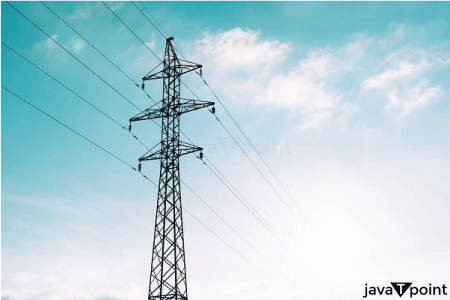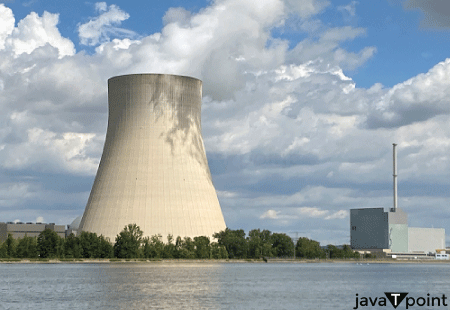Difference between Energy and PowerIntroduction:Energy and power are related concepts in physics, but they refer to different aspects of physical phenomena. While often used interchangeably in everyday language, these concepts hold distinct meanings and play unique roles in understanding how the universe operates. Let's explore the differences between energy and power and their significance in various contexts. 
Energy:Energy, in its essence, encapsulates the ability to cause change, to do work, and to induce motion. The entity of transformation drives the perpetual dance of particles, molecules, and systems across the universe. Energy is a fundamental concept in physics that represents the ability to do work or cause a change in a physical system. It's a scalar quantity, which means it has magnitude but no direction. Energy is a fundamental property of matter and fields, and it comes in various forms, each with its own distinct characteristics and effects. In essence, energy is what allows things to happen, to move, and to change. In more technical terms, energy is a measure of a system's capacity to perform mechanical work or transfer heat. It is a conserved quantity, meaning it cannot be created or destroyed, only transferred or converted from one form to another, in accordance with the law of conservation of energy. Energy can manifest in several forms, including: 1. Kinetic Energy (KE):Kinetic energy is the energy an object possesses due to its motion. It depends on both the object's mass and its velocity. Formula: KE = 0.5 * m * v^2 Where:
2. Potential Energy (PE):Potential energy is associated with an object's position or condition. There are different types of potential energy, such as gravitational potential energy and elastic potential energy. a. Gravitational Potential Energy (GPE): Formula: GPE = m * g * h Where:
b. Elastic Potential Energy (EPE): Formula: EPE = 0.5 * k * x^2 Where:
3. Work (W):Work is done when a force is applied to an object and it moves through a distance. It's a measure of the transfer of energy from one object to another. Formula: W = F * d * cos(θ) Where:
4. Thermal Energy (Q):Thermal energy is the energy associated with the temperature of an object. It's related to the random motion of particles within a substance. Formula: Q = mcΔT Where:
5. Chemical Energy (CE):Chemical energy is stored in the bonds of atoms and molecules. It's released or absorbed during chemical reactions. Formula: No single formula - energy released or absorbed can vary depending on the reaction. 6. Electrical Energy (EE):Electrical energy is the energy carried by the movement of electrons in a conductor. Formula: EE = P * t Where:
7. Nuclear Energy:Nuclear energy is released during nuclear reactions. The formulas for nuclear energy involve complex equations from nuclear physics and are not straightforward to represent here. 8. Sound Energy (SE):Sound energy is carried by sound waves and results from vibrations traveling through a medium. Formula: No direct formula - sound energy depends on the intensity and characteristics of the sound wave. 9. Electromagnetic Energy:Electromagnetic energy is carried by electromagnetic waves, including light. The energy of a photon can be calculated using Einstein's equation: Formula: E = h * f Where:
These are some of the main types of energy, each with its own distinctive characteristics and associated formulas. It's important to note that energy can often be converted from one form to another, highlighting the interconnectedness of these concepts in the physical world. Conservation of Energy:The principle of conservation of energy is a fundamental concept in physics that states that energy cannot be created or destroyed in an isolated system. Instead, the total amount of energy remains constant over time, though it can change forms and be transferred between different components of the system. This principle is a cornerstone of modern physics and has far-reaching implications for understanding and analyzing various physical phenomena. Principle of Conservation of Energy:The principle of conservation of energy is rooted in the First Law of Thermodynamics, which is a fundamental law of nature. It asserts that the total energy of an isolated system remains constant over time, and any changes in energy within the system are solely due to energy being transferred into or out of the system or converted from one form to another. Closed Systems and Application:In the context of the principle of conservation of energy, a "closed system" refers to a physical system that does not exchange matter with its surroundings but may exchange energy. While no real system is perfectly closed, many physical scenarios can be approximated as closed systems for the purpose of analysis. Application of Conservation of Energy in Closed Systems:The principle of conservation of energy is exceptionally useful when applied to closed systems because it allows scientists and engineers to analyze and predict the behavior of such systems without having to account for energy entering or leaving from outside sources. Here are a few ways in which the principle is applied:
Real-world Considerations:While the principle of conservation of energy holds true for closed systems, it's important to note that real-world systems are subject to various limitations and factors that can lead to energy losses, such as friction, air resistance, and inefficiencies in energy conversion. However, these losses do not violate the conservation principle; they merely account for energy being transferred out of the closed system. Power:Power is a fundamental concept in physics that measures the rate at which energy is transferred, converted, or used. In other words, power quantifies how quickly work is done or how quickly energy changes from one form to another. It reflects the amount of energy used per unit of time. The concept of power is crucial for understanding how fast processes occur and how efficiently energy is utilized in various systems. Mathematically, power (P) is defined as the amount of energy (E) transferred or converted over a certain time interval (t): Power (P) = Energy (E) / Time (t) The SI unit of power is the watt (W), which is equivalent to one joule per second (1 J/s). There are multiple types of power. Some of them are:
These types of power are used in various scientific, engineering, and technological contexts to describe and quantify energy-related phenomena in specific domains. Difference between Energy and Power:Energy and power are two related but distinct concepts in physics. They both deal with the quantification of physical phenomena, but they represent different aspects of these phenomena. Here's a detailed comparison of the differences between energy and power: 1. Definition:
2. Nature:
3. Vector/Scalar:
4. SI Units:
5. Calculation:
6. Represents:
7. Time Dependency:
8. Examples:
In summary, energy represents the ability to do work and exists in various forms, while power measures how quickly work is done or how fast energy is transferred or converted. Energy is a scalar property associated with a system's state, whereas power is a vector that describes the rate of change of energy with respect to time. Both concepts are essential in understanding and analyzing physical phenomena. Similarities between Power and Energy:While energy and power are distinct concepts in physics, there are some similarities and connections between the two:
In summary, energy and power share some common ground in their applications and units of measurement, and they are interconnected in many physical processes. However, they fundamentally differ in their definitions, nature, and roles in physics. Energy represents the capacity for work, while power quantifies the rate at which work is done or energy is transferred. Conclusion:In summary, energy and power are two fundamental concepts in the realm of physics, each holding its distinct significance. Energy serves as the reservoir of potential for any work or change to occur in a system. It encapsulates the total quantity of resources available. In contrast, power represents the rate at which energy is expended, transferred, or converted. It is the dynamic aspect of energy, depicting the speed at which processes unfold. Analogously, energy is akin to the stored wealth, the accumulated resources available for utilization. Power, on the other hand, mirrors the rate of expenditure, the velocity at which actions are executed. Together, they are integral to comprehending and optimizing processes, from the mechanical operations of engines to the electrical consumption in our daily lives.
Next TopicDifference between Stars and Planets
|
 For Videos Join Our Youtube Channel: Join Now
For Videos Join Our Youtube Channel: Join Now
Feedback
- Send your Feedback to [email protected]
Help Others, Please Share










